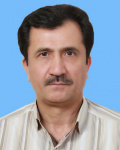| نویسندگان | Hasan Hassanzadeh,shamardan muhammd mohsen,nurozi mamood |
|---|
| نشریه | Journal of the Brazilian Society of Mechanical Sciences and Engineering |
|---|
| شماره صفحات | 1-20 |
|---|
| شماره سریال | 40 |
|---|
| شماره مجلد | 480 |
|---|
| ضریب تاثیر (IF) | 1.235 |
|---|
| نوع مقاله | Full Paper |
|---|
| تاریخ انتشار | 2018 |
|---|
| رتبه نشریه | ISI |
|---|
| نوع نشریه | الکترونیکی |
|---|
| کشور محل چاپ | آلبانی |
|---|
| نمایه نشریه | JCR،Scopus |
|---|
چکیده مقاله
The formation and growth of symmetric and asymmetric recirculation regions play an important role in the viscous dissipations, temperature distribution, and heat transfer rate. In this study, the inertial and non-isothermal fow of viscoelastic
fuid has been simulated in the planar channel with a 1:3 symmetric gradual expansion for diferent Reynolds and elasticity
numbers at three expansion angles of 30°, 45°, and 60°. Also, the thermal boundary condition of constant temperature has
been used on the walls, and the constitutive equation of exponential Phan Thien–Tanner has been employed for modeling the
polymeric stresses of the viscoelastic fuid. Due to the signifcant efect of temperature on the properties of the viscoelastic
fuid, and the role of viscous dissipation in heat generation, the fuid properties are considered temperature dependent, and
the terms of viscous dissipation are considered in the energy equation. The main purpose of current study is to investigate the
efects of fuid inertia and elasticity and the expansion angles on the fow pattern, heat transfer characteristics, and viscous
dissipation of inertial viscoelastic fow in the planar channel with gradual expansions. Therefore, the streamlines, length of
vortices, isothermal lines, total viscous dissipations, and local and mean Nusselt numbers (Nu) have been examined inside
the channel expansion for diferent Reynolds and elasticity numbers in the range of 10 ≤ Re ≤ 100 and 0.01 ≤ El ≤ 2. The
results show that the maximum values of local Nusselt numbers are enhanced by increasing the Reynolds and elasticity
numbers and the expansion angle for the hydrodynamically and thermally developing conditions.
لینک ثابت مقاله
